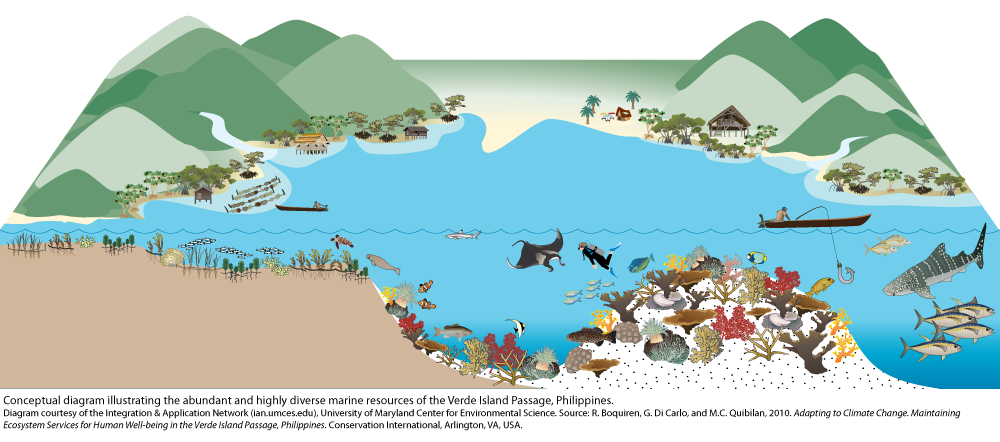Boosting Scotland's Coastal Ecosystems: Seagrass Planting Initiatives

Table of Contents
The Importance of Seagrass Meadows in Scotland's Coastal Ecosystems
Seagrass meadows are often called the "lungs of the sea," and for good reason. These underwater grasslands provide a multitude of invaluable ecosystem services, contributing significantly to the health and resilience of Scotland's coastal environments. Their ecological significance is multifaceted:
-
Vital Nursery Grounds: Seagrass meadows act as crucial nurseries for a wide variety of commercially and ecologically important fish and shellfish species. Species like cod, plaice, and seahorses utilize the protective environment of the seagrass beds for spawning and juvenile development.
-
Biodiversity Hotspots: These meadows support a rich tapestry of life, providing habitat for numerous marine species. In Scotland, this includes everything from small invertebrates like amphipods and crustaceans, to larger animals such as sea urchins, scallops, and various species of crab and fish.
-
Carbon Sequestration Powerhouses: Seagrass meadows are incredibly effective at sequestering carbon dioxide from the atmosphere, playing a vital role in mitigating climate change. They are estimated to store carbon at a rate much higher than many terrestrial forests. This "blue carbon" storage is a critical element in reducing global greenhouse gas emissions.
-
Coastal Protection Champions: The dense root systems of seagrass meadows stabilize sediments, reducing coastal erosion and mitigating the impact of storm surges. This natural coastal protection is particularly valuable in areas vulnerable to climate change impacts.
-
Water Quality Improvement: Seagrass acts as a natural filter, improving water quality by trapping sediments and pollutants. This enhanced water clarity benefits the entire ecosystem, supporting the growth of other marine plants and animals.
Current Threats to Scotland's Seagrass Meadows
Despite their ecological importance, Scotland's seagrass meadows are facing significant threats, leading to a concerning decline in their extent and health. Key factors contributing to this decline include:
-
Pollution: Runoff from agricultural land containing fertilizers and pesticides, along with sewage discharge, introduces excessive nutrients and harmful chemicals into coastal waters, negatively impacting seagrass growth and health.
-
Destructive Fishing Practices: Bottom trawling, a fishing method that drags heavy nets along the seabed, can physically destroy seagrass meadows, causing significant damage to the habitat.
-
Coastal Development: The increasing pressure for coastal development, including port expansions and waterfront construction, often leads to direct habitat loss and fragmentation of seagrass meadows.
-
Climate Change Impacts: Rising sea temperatures, ocean acidification, and increased frequency and intensity of storms are all negatively affecting seagrass meadows, further exacerbating existing threats.
Seagrass Planting Initiatives: Methods and Success Stories
Various seagrass planting techniques are being employed across Scotland to restore these vital ecosystems. These initiatives involve a combination of scientific expertise and community involvement.
-
Seed Collection and Sowing: Seeds are collected from healthy seagrass meadows and sown directly onto suitable seabed areas.
-
Transplanting of Seagrass Shoots: Healthy seagrass shoots are carefully transplanted from donor sites to recipient areas, establishing new patches of seagrass.
-
Community-Led Initiatives and Citizen Science: Many successful projects rely heavily on the dedication and participation of local communities and volunteers involved in planting and monitoring activities. Citizen science plays a significant role in data collection and long-term monitoring.
-
Monitoring Programs: Regular monitoring is crucial to assess the success of planting efforts and adapt techniques accordingly. This involves assessing seagrass survival rates, growth, and the overall health of the restored meadows.
-
Successful Projects: Several organizations, such as [Insert examples of Scottish organizations involved in seagrass restoration, with links to their websites], have undertaken successful seagrass restoration projects in various locations around Scotland, demonstrating the feasibility and positive impacts of such initiatives. For example, [mention a specific location and its success].
The Future of Seagrass Restoration in Scotland: Challenges and Opportunities
While significant progress is being made in seagrass restoration, numerous challenges remain. The future success of these efforts hinges on addressing these challenges and capitalizing on the existing opportunities:
-
Securing Funding: Large-scale seagrass restoration projects require substantial funding to cover costs associated with research, planting, monitoring, and community engagement.
-
Policy Support: Stronger policies are needed to protect existing seagrass meadows and support restoration efforts through regulations on pollution, fishing practices, and coastal development.
-
Public Awareness: Increased public awareness and engagement are essential to foster support for seagrass conservation and encourage community involvement in restoration projects.
-
Research and Development: Further research into optimal planting techniques, the long-term effects of climate change on seagrass, and the development of robust monitoring strategies are all crucial.
-
Collaboration: Effective collaboration between government agencies, research institutions, NGOs, and local communities is vital for the success of large-scale seagrass restoration initiatives.
Conclusion
Seagrass planting initiatives are essential for restoring and protecting Scotland's valuable coastal ecosystems. These underwater meadows offer a multitude of benefits, from supporting biodiversity and enhancing coastal resilience to mitigating climate change through carbon sequestration. By tackling the threats they face and implementing effective restoration strategies, we can safeguard these vital habitats for future generations. Get involved in seagrass planting today and contribute to a healthier Scottish coastline! Learn more about ongoing seagrass conservation efforts in Scotland and find ways to support local initiatives and participate in citizen science projects. Together, we can make a real difference in boosting Scotland's coastal ecosystems and protecting the incredible marine life they support.

Featured Posts
-
 Sydney Sweeney And Jonathan Davino Why Their Split Is Reportedly Difficult
May 05, 2025
Sydney Sweeney And Jonathan Davino Why Their Split Is Reportedly Difficult
May 05, 2025 -
 Gigi Hadid Shares Unseen Glimpses Into Her Relationship With Bradley Cooper
May 05, 2025
Gigi Hadid Shares Unseen Glimpses Into Her Relationship With Bradley Cooper
May 05, 2025 -
 Louisiana Derby 2025 Your Guide To Odds Contenders And Kentucky Derby Pathway
May 05, 2025
Louisiana Derby 2025 Your Guide To Odds Contenders And Kentucky Derby Pathway
May 05, 2025 -
 The Count Of Monte Cristo A Critical Review Of Dumas Enduring Tale
May 05, 2025
The Count Of Monte Cristo A Critical Review Of Dumas Enduring Tale
May 05, 2025 -
 Lizzos Weight Loss Journey Celebrating Slimmer Curves With Energetic Dance
May 05, 2025
Lizzos Weight Loss Journey Celebrating Slimmer Curves With Energetic Dance
May 05, 2025
Latest Posts
-
 Max Verstappen Paternity And Miami Grand Prix A Double Celebration
May 05, 2025
Max Verstappen Paternity And Miami Grand Prix A Double Celebration
May 05, 2025 -
 Verstappen Welcomes Baby Ahead Of Miami Grand Prix
May 05, 2025
Verstappen Welcomes Baby Ahead Of Miami Grand Prix
May 05, 2025 -
 Formula 1 Star Max Verstappen Becomes A Father Announces Babys Name
May 05, 2025
Formula 1 Star Max Verstappen Becomes A Father Announces Babys Name
May 05, 2025 -
 Max Verstappens First Child A Daughter Arrives Before Miami Grand Prix
May 05, 2025
Max Verstappens First Child A Daughter Arrives Before Miami Grand Prix
May 05, 2025 -
 September Showdown Canelos Size A Deciding Factor Against Crawford
May 05, 2025
September Showdown Canelos Size A Deciding Factor Against Crawford
May 05, 2025
